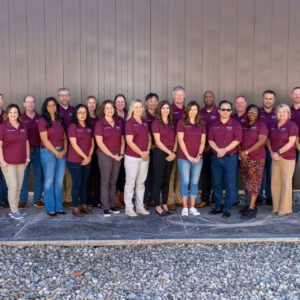Mottled Waterhyacinth Weevil
Neochetina eichhorniae Warner
[Coleoptera: Curculionidae]
Biology | History | Status | Management | Weeds | Literature | Links
Biology
Stark and Goyer (1983) report the biology and behavior of Neochetina eichhorniae in Louisiana. Adults lived an average of 57.8 days in the laboratory. Adults averaged 2.8 eggs per night and laid eggs mostly at night on lower leaves of the plants. Larvae hatch from eggs in about 8 days and took 41 days to develop to pupae. Pupation occurs on the upper part of the root system. There were four generations in southern Louisiana. Larvae feed inside the leaf petioles. Adults prefer to feed on the upper surface of the leaves, then lower leaf surface and least preferred was the leaf petiole.
History
Neochetina eichhorniae was released into the United States in 1972 along with N. bruchi and Sameodes albiguttalis (Perkins 1973). It has been an important insect for biological control of water hyacinth in many other parts of the world.
Status
This weevil is the primary biological control agent for water hyacinth. It is often found in conjunction with the chevroned waterhyacinth weevil. Biological control programs with both weevils are often more successful than with a single species.
Management
These weevils can be collected as adults on the plants. The adults are active at night and can easily be collected up on the foliage at that time. Adults can then be relocated to new locations. Local populations of the weevil may need supplemental releases of additional adults to enhance the weevil population. Weevil populations are affected by cold temperatures which may limit their use in some situations. Adults are sometimes collected at lights.
Weeds Affected
Neochetina eichhorniae feeds on water hyacinth.
Literature
Grodowitz, M. J., R. M. Stewart, and A. F. CoFrancesco. 1991. Population Dynamics of Waterhyacinth and Biological Control Agent Neochetina eichhorniae (Coleoptera: Curculionidae) at a Southeast Texas Location. Environ. Entomol. 20(2): 652-660.
Perkins, B. D. 1973. Potential for waterhyacinth management with biological agents. Proc. Tall Timbers Conf. Ecol. Anim. Control Habitat Manage. 4: 53-64.
Stark, J. D., and R. A. Goyer. 1983. Life Cycle and Behavior of Neochetina eichhorniae
Warner (Coleoptera: Curculionidae) in Louisiana: A Biological Control Agent of Waterhyacinth. Environ. Entomol 12: 147-150.
Links





